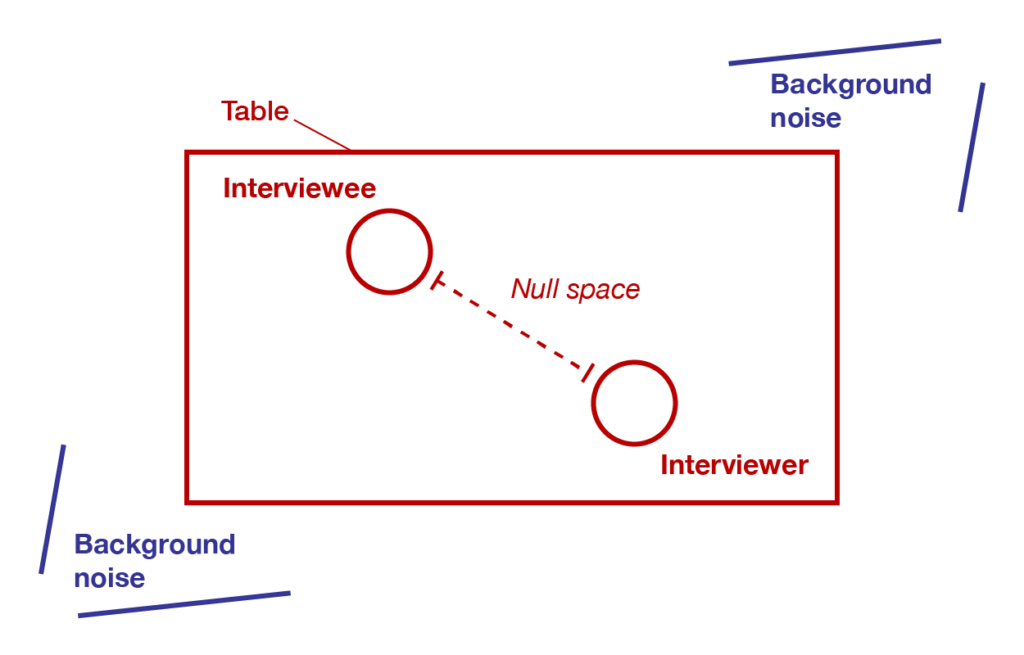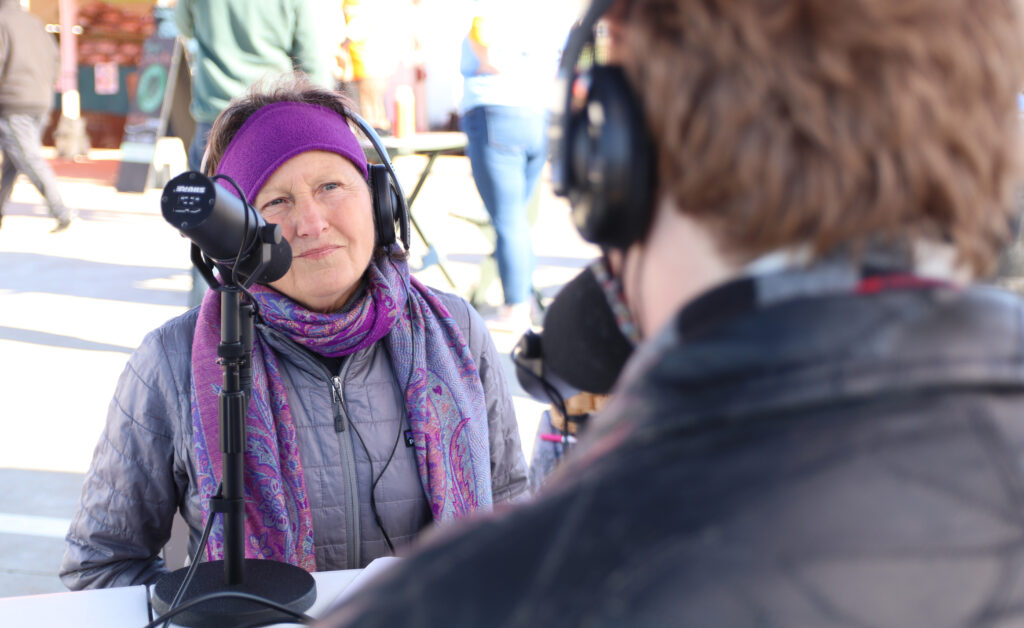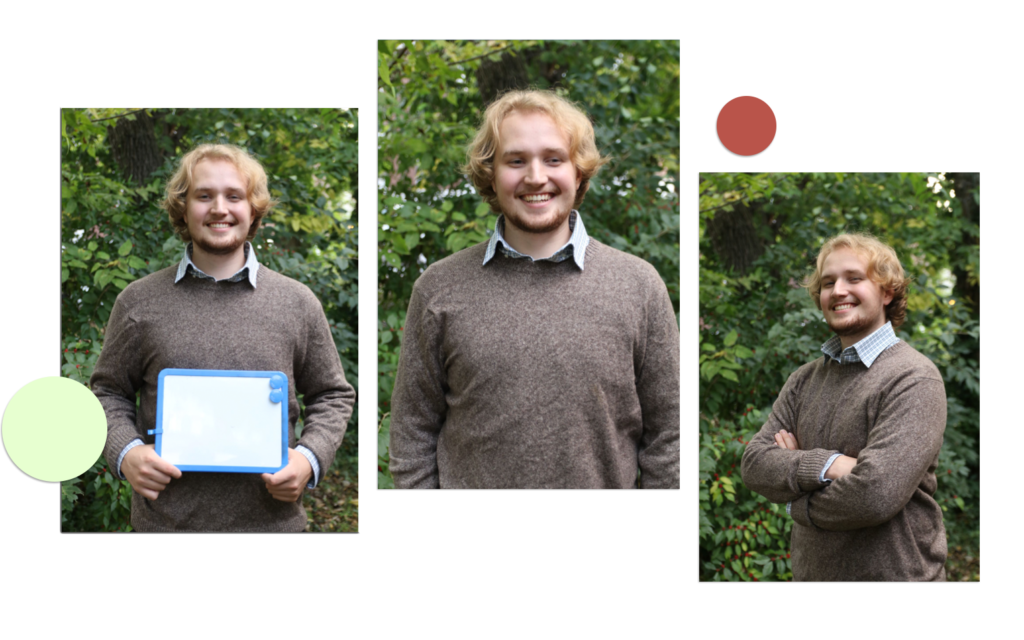Set-ups
These are some equipment arrangements to help minimize outside background noise at your event.
Table set up for two microphones

Table set up for three microphones

Optimized set up (table and standing audio booth)

Ace your interview
How to conduct a quality interview with tips from Caoilinn Goss.

Warm-up
GET READY: Ease your participant into recording with a few easy questions and actions.
- Ask a couple of “closed-ended” questions to help ease participants into things (i.e. “What did you have for breakfast?”)
- Ask questions about what brought them out to an event
- Ask them something about their community, ask them what they like to talk about
INTRODUCE THE MIC: Introduce participants to the mic setup so that they feel more comfortable and you can gather the best sound. Talk them through your process of setting up equipment and a few things to keep note of while recording.
- Position the mic about 6 inches away from the participant
- Angle the mic up so participants’ bodies block a lot of the sound behind them and we don’t hear popping Ps and Ts
MUST: Before you formally start the interview, ask and record your participant’s name and how to spell it, where they’re from, and their pronouns!
Asking good questions
“Get people back in the moment. Keep them there. And then get OUT OF THE WAY.” – Tisha Thompson
Our goal is to get people to tell us a story — THEIR story. We have set questions, but don’t be afraid to ask simple, open-ended follow-up questions:
- Tisha Thompson swears by “And then what happened?” and “Why?”
- Who else do you think is important to this story?
- What are you seeing in your head right now?
- How did you feel? How do you feel now?
- “Can you tell me more about that?” is a Rebecca Smith go-to!
Embrace the awkward
Someone smart somewhere did a study that found human beings can endure 12 seconds of silence before they feel so uncomfortable they have to fill it.
SO.
Embrace the awkward pauses! The people you’re talking to will often say more, to reflect or to summarize what they’ve already said and provide greater depth.
**Phone interviews are a great place to practice those 12 seconds of silence, actually, because you can’t rely on nonverbal cues. You can practice by muting yourself when you aren’t talking, That way you won’t get crosstalk in a bite and you have to take the extra time to unmute yourself to ask another question.
Nonverbal communication
That being said, we don’t want our participants to feel so awkward they don’t want to share … and that’s where nonverbal cues come into play.
- Smile! Nod encouragingly!
- MAINTAIN EYE CONTACT – it’s not a staring contest, but you should look at them and not at your questions list or the rest of your environment
…. The best part is all of these work over Zoom as well!
More on asking good questions!
Don’t ask two questions in one question — Keep it simple, silly!
Don’t make statements. You show up, you shut up, you listen.
- It’s only natural that when someone shares something with you, you want to share back. It’s human. It’s empathetic.
- But this isn’t a regular conversation, the goal is not to bond but to pass the mic (literally) to voices that don’t get heard enough. So fight the instinct.
- It’s also human to want to show your own knowledge on a topic. Don’t. Let your source be the expert. You’ll actually earn more trust that way.
ONE MORE THING FROM TISHA THOMPSON: Don’t feel like you have to ask your questions in the order that you wrote them, let the source steer the conversation and treat your list like a checklist not a step-by-step guide
Shoot your shot
How to take a good photo of your pop-up participants with tips from Becca Newton. Watch the tutorial here.

What makes up a good photo? Composition, lighting and subject.
Learn about the exposure triangle: shutter speed, ISO, aperture.
What are we looking for in a good photo?
- Clear photo
- In-focus
- Relevant background
- Suitable camera settings
- Portrait and landscape versions of the photo
- Tip: Write your participant’s name on a board/piece of paper. For at least one photo, have your participant hold this paper in the photo so it’s easier to identify who is who later.